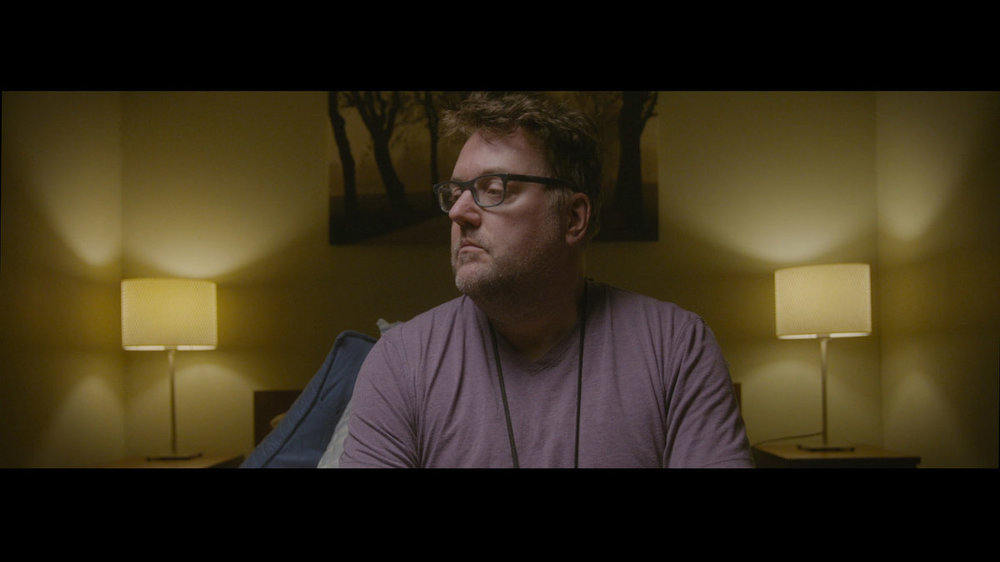-
Posts
37 -
Joined
-
Last visited
Everything posted by Michael Hammond
-

What are y’all doing these days?
Michael Hammond replied to Gregory Irwin's topic in General Discussion
OK if we're talking about railfan stuff...my first foray into filmmaking was shooting trains on a little sonycam and making DVDs to sell to other railfans. Was kind of lucrative for a while and helped me learn a ton of stuff about lighting, framing. My go-to for railfan videos is the ol' Canon XH-A1s. Pop it on a tripod and fire away. This thing must be 15 years old at this point. It's not good for anything else I do these days but it suits these trackside trips just fine. I do see some fans are out photographing the lines in the NYC area during the pandemic, but I'm content with sitting inside and working on building up some more cinematography skills. And just to ensure this post stay on topic, some of what I'm doing in this down time is learning more about exposing with false color, setting up little scenes to film myself in different types of lighting, playing with DaVinci Resolve trying to get better at it. -
For me, it's a two-fold answer. I'm terrified of being unprepared for a job - not having enough lights, not having the right lights, not being able to humanly cover, combat and overcome every challenge that is going to arise from the moment I arrive at a location to the moment we wrap (client liasing, power issues, equipment problems, etc.) On the other hand, I've come to realize from forums like this, from ASC magazine, etc. that I can only prepare as much as I can to be ready. And once we're on set, things WILL inevitable happen that aren't expected. And half of my job seems like it's about dealing with those things as they come up. I guess that's the fun of it.
-

What are y’all doing these days?
Michael Hammond replied to Gregory Irwin's topic in General Discussion
Very nice! I have a feeling these are going to stick with me as I read on and I will be imagining the characters looking like this. -

What are y’all doing these days?
Michael Hammond replied to Gregory Irwin's topic in General Discussion
Reading the complete Sherlock Holmes collection. I don't usually have time for reading. Making healthy dinners at home with the wife. We don't usually have time for that. Calling friends and family to say hi and check in with them. Relearning how to composting and grow herbs. Don't usually have the time for that. Listening to as much music as I can. Don't usually have time for that. Meditating often to let go of the stress, anxiety, sadness -
I'm currently testing out the UMP 4.6K G2 and it looks like I can only record to one CF card or one SD card at a time. No backup, no mirrored recording. And I'm also reading (haven't had a chance to test it myself yet) that if recording to a CF card I can't also record to something like an Atomos via the 12g SDI? Are these things correct? I feel like I don't get a clearly concise answer anywhere but I'm not looking hard enough? I'm loving the picture quality of this camera but in a professional setting I need backup recordings to cover my butt should something go wrong with an in-camera card. If I can't have backup recording in this camera I'll probably go to the C300mk2 whose image I don't like nearly as much as the UMP. Thanks for any input on this!
-
Hi Daniel, can you tell me what you mean by "flat?" To me, there are areas of light (where I'm sitting and where the practicals are) and some shadow (walls to the right and left of me, artwork above bed. Plus there are a couple different colors here. To be honest, I do often think my shots are flat and I'm trying to get better at that, but I think this one has a little depth.
-
Absolutely understand that. In fact, I'm just now moving from an 8-bit 4:2:0 highly compressed AVCHD camera to a new camera that gives me 10-bit 4:2:2 prores. I think in the past I've run into exactly this problem of compression which, I think, is more amplified in shadows. That's the way it seemed to me. So with this new camera I find that I can expand my opnion about light and shadow in the same scene.
-
Thanks for the replies everyone. David, your example and suggestion of shooting with a lens cap on made this perfectly clear for me. I guess I've been assuming that a camera is going to see dark and say to itself "say, I really need to see that." Of course cameras have no creative brain so they shoot what you give them. I thought about the times I've done an ABB with a lens or body cap on and watching the camera level out for the ISO it's set at. And then when it's done I have a nice clean image. So I went back into the same room with the one light and turned everything else off, watched the LUT in my screen and then applied it in post. No noise in the shadows. Thanks again and I'm no longer scared of shadow!
-
Thanks very much David - you bring up some really good points. Specifically to remind me that there's always a trade-off when it comes to lighting. When we change one thing accomplish something we want, and then we need to change other things to work with that decision. Your answer about white and black tiles brings up a related question I have about camera sensors. Generally speaking, when it's said that we need to expose for the sensor we're talking about giving that sensor enough light to be clean - or as clean as possible if that's the look we're going for. If we expose for the white tiles, the black tiles are going to fall below what we might think of as an acceptable exposure level. Why wouldn't that give noise in the black tiles? Is it because we're giving the sensor an overall amount of light and therefore it has enough info to work with for the entire picture? Asked another way, if I film a black room with no light the image is going to be FPN, and all sorts of terrible electronic noise. If I shot a well lit white room the picture will be very clean. When I mix these two in a scene - a well lit person, and areas where very little light is present in order to get dark shadows - why wouldn't the dark areas get noisy? Especially if I light close to a 2.8 for a 2.8 lens.
-
Hi everyone, First post here! I have a question about getting dramatic lighting without noise in the shadows. Here's the hypothetical: Say I'm going for a dramatic scene, lots of shadows. And let's also say the talent includes one person in the scene, sitting in a chair in a dark room. There are a couple of practicals in the scene so there's going to be more light than just a key and key/fill on the talent's face and body. I'm using a 2.8 lens and I don't want to shoot wide open so I decide I'm going to key the actor at a 4.0. I set my lighting to do so, set my iris to 4.0 and viola - talent looks nice with an overhead softbox with a grid shining light down on them, and on their area only. Meanwhile, other areas in the scene that aren't filled with practicals and their accompanying ambient light (which isn't much compared to my overhead softbox) goes into deep shadow. Well, there's the look I'm going for but now those areas are underexposed. And now there's going to be noise in the shot in those areas. I can increase the light output of the overhead softbox and the practicals to get more light to the sensor. But to keep the talent at the right exposure I need to stop the camera down so all that additional light is basically going back to the same levels with some underexposure issues happening due to a larger f-stop. Is my recourse going to be using more light for a clean shot and then darkening in post? As long as my ratio of key to practicals to shadows is where I want it, this should work? And if the scene is in a larger room than in my attached example (more space in between the light sources) would I add something like an ambient fill above the scene and then darken in post? In the attached jpeg of a quick and dirty setup, I'm at a 3.2 f-stop with a 2 stop ND filter. Thanks for any feedback on this!




